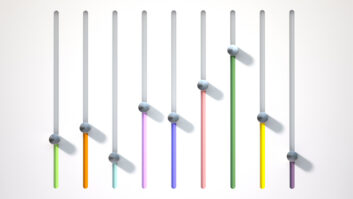
Mark Grant
In the final part in our special series on tech trends in modulation monitor design, we query Mark Grant, design engineer at Belar Electronics Laboratory Inc.
How have mod monitors changed notably in the past five to 10 years?
Grant: HD Radio has been the biggest change in our focus over the last 10 years. Designing equipment to monitor the HD portion of the signal while at the same time providing the broadcaster with accurate analog measurements has been the challenge. The complexity of the monitor has increased considerably as a result of this change.
As far as the technology, we have moved away from alphanumeric, seven-segment and LED indicators on front panels to high-resolution graphical displays. This provides flexibility in how information is presented and features can be added or modified with software updates.
The internal processing of the monitor has also evolved to direct RF carrier sampling with down conversion, demodulation and measurements, all software-based.
In what direction are they heading next?
Grant: The next generation of modulation monitor will be a general-purpose hardware and display platform with software-defined functionality. The term software-defined radio comes to mind, but instead think software-defined modulation monitor.
In addition to the ability to monitor standard analog AM, FM and shortwave signals, future monitors will also need to be able to monitor HD Radio, DRM, DAB and whatever else comes down the pike. This will require a monitor with a flexible wide-band RF input and lots of internal processing and display power.
What unique problems are generated by HD Radio, when it comes to monitoring and measurement?
Grant: Our standard analog monitors were designed with maximum bandwidth in order to pass the analog signal transparently. HD requires reduced bandwidths; this results in a compromise especially for total modulation readings. The HD carriers and analog FM sidebands overlap in the frequency range above +/- 100 kHz. When this portion of the spectrum passes through an FM demod, self-interference results, as David Hershberger has written in Radio World. When separate analog and HD transmitters are used, the analog TX sample can be feed to the analog monitor, but where a combined hybrid signal is fed to the monitor, internal filtering is the only option. The FMCS-1 uses a combination of selectable RF filtering to suppress the HD carriers, variable bandwidth composite filtering and peak weighting to achieve accurate total readings.
How about for RDS?
Grant: From a monitoring point of view, RDS is stable and mature technology without any major issues.
Does industry discussion about Single Side Band Suppressed Carrier affect your product sector?
Grant: Our current FMCS-1 and FMHD-1 monitor’s stereo decoder is software-based and could take advantage of the reduced L–R bandwidth of the SSBSC signal. Currently both monitors decode the full 23–53 kHz L–R frequency range, but filtering to 38 kHz could be implemented in software. The monitor could also provide the ability to A/B compare the audio using the full and reduced bandwidth L–R signal.
What is the next big challenge facing mod monitor designers?
Grant: Adapting to all the emerging digital transmission standards.
Briefly, what is your newest or most notable product in this segment?
Grant: The latest addition to the FMHD-1 is a decoder expansion board that allows up to four HD streams to be monitored simultaneously. Also, customers using the FMHD-1 and FMCS-1, please check our website for software updates periodically at www.belar.com/update/index.html.







